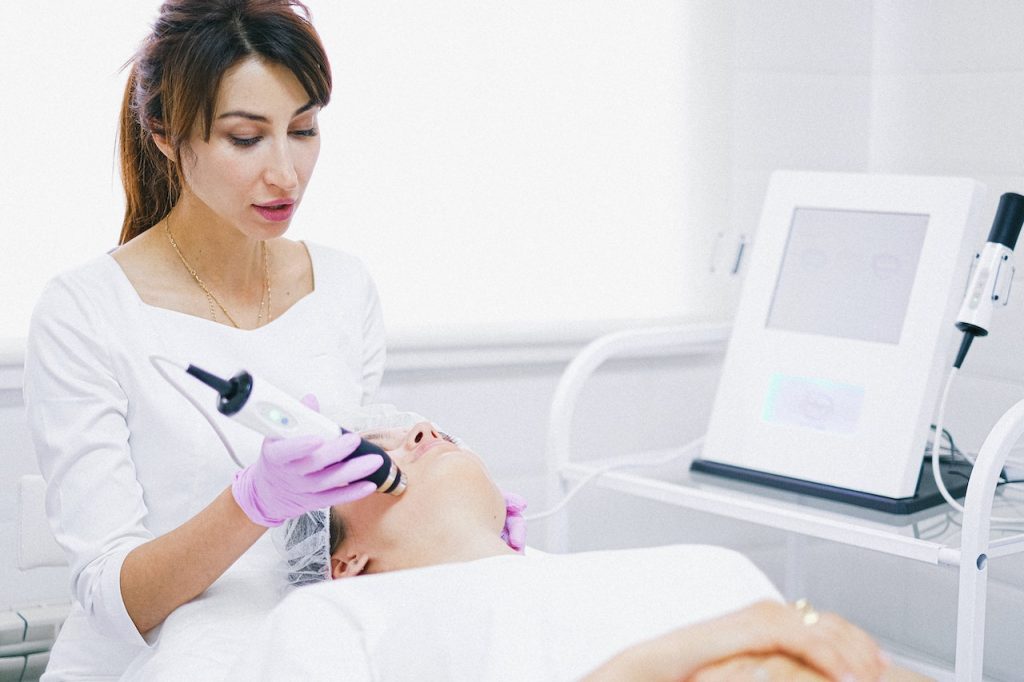Laser and IPL systems are full of physics terms and expressions. Many of these are daunting to non-physicists, and we tend to forget that only some are nerds!!
So, here’s a breakdown of some of those terms.
Wavelength – The Colour Of Light
The wavelength of light is its colour. So, a 700nm wavelength is red light, while 532nm is green. Physicists prefer to use wavelengths as they are much more precise than colour. Many wavelengths are invisible to the human eye. Anything above 700nm is usually hidden, but we can feel these wavelengths as heat!

Energy – ‘Stuff’
Energy is a strange thing to describe! There are many forms of energy, including heat, sound (vibration), light, kinetic (movement), gravitational, potential, and electrical….
For physicists, energy is the ‘stuff’ which makes things change or happen. So, we know that heat energy will raise the temperature of something while gravity keeps us all grounded! We use light energy to generate heat energy in tissues to induce a change.
to induce a change.
We measure energy in ‘Joules’ (or millijoules or megajoules).
Fluence – “Concentration Of Energy” = Temperature Rise In Skin
The fluence is simply the ‘concentration of energy in a spot. Therefore, the subsequent temperature rise in the tissues directly depends on the fluence.
So, if we fire a certain amount of energy into a prominent spot, the concentration is relatively low. This will induce a reasonably low-temperature rise.
Whereas, if we fired precisely the same amount of energy into a smaller spot, the concentration would be higher, and the resultant temperature rise would also be higher.
Consequently, fluence is critical when considering any laser/IPL treatment. It directly affects the outcome and must be chosen very carefully.
The fluence is found by dividing the energy (in Joules) by the spot size area (usually in cm2) and is measured in ‘Joules per square centimetre’ (J/cm2).
Absorption
It might be absorbed when the light energy interacts with something in the skin (collagen, melanin, blood, etc.). This means that the light energy is ‘kept’ by that object – the light photon is converted into heat (usually), raising the object’s temperature.
This is the whole purpose of laser/IPL treatments. We are trying to ‘force’ something in the skin to ‘absorb’ the energy we have thrown at it. Absorption of light energy is the goal!
To do this efficiently, we need to ‘match’ the wavelength of the light we’re using to the absorption of the target(s).
Choosing the correct wavelength to match the target’s absorption peak is crucial in all these treatments. Otherwise, you are wasting your time…
Pulsewidth (pulse duration, pulse length) – “Cooking Time.”
The pulse width (or pulse duration or pulse length – are all the same!) is how long the light energy pulse is ON. It can be thought of as the ‘cooking time’ in all photothermal treatments.
This parameter is as vital as the fluence! For example, if you put an egg into a pot of boiling water (which is at 100°C) and then remove it after 10 seconds, is it adequately cooked? Of course not!
Why? Well, it’s just because the egg was cooked long enough. This is obvious!
Yet, it is precisely the same with photothermal treatments in tissues. If the tissues are not kept at the required temperature long enough, then they will not cook!!
Repetition rate – The ‘Hertz.’
This is simple. The repetition rate (rep rate) is just how quickly the shots or pulses come out of the laser/IPL. So, if one picture is fired each second, the rep rate is 1 Hertz. Likewise, if five shots are fired per second, it’s 5 Hertz (or 5 Hz).

Spot Size – Is More Important Than You Might Think.
The spot size determines the area of the beam on the skin surface. Very simple.
But the spot size is much more important than that! Coupled with the energy delivered, it determines the fluence, or ‘concentration’, of the skin; this determines the resultant temperature rise in the skin.
The spot size increases as the light energy penetrate deeper into the skin. Consequently, the fluence drops! And this is purely due to the scattering effects – nothing to do with the absorption of the light by anything in the skin (that’s a different issue – see above).
This means in terms of laser/IPL treatments, larger spot sizes are always better when treating deep targets in the skin.
This helps to demystify some of the expressions we use in lasers and IPLs.

